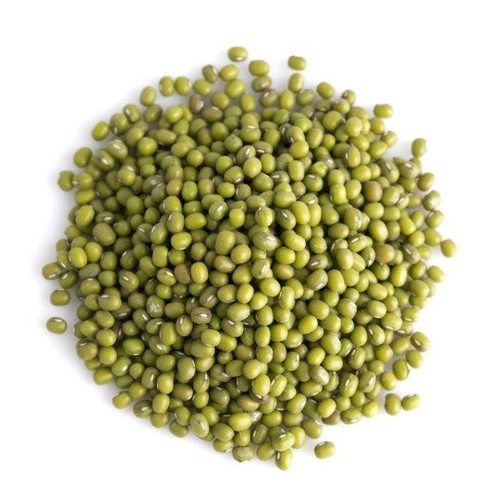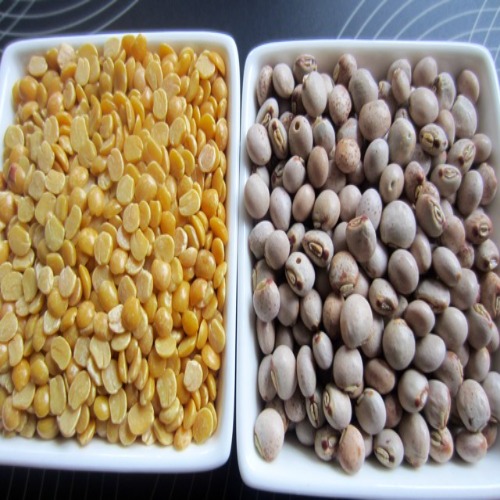Chickpeas
Common Names: Chickpea, chickpea, Egyptian bean, gram pea, Bengal gram. Botanical: Cicer arietinum Family: Legumes
Uses And Benefits: Though mainly cultivated for its edible seeds, Cajanus cajan can be considered a multipurpose species. Pigeon pea stems are a good fuel source, valued for pigeon pea's fast-growing habit, though their energy value is half that of charcoal. Stems and branches of pigeon pea are also used for basketry. Among other uses of pigeon pea, trials have shown a potential use as a raw material for paper pulp. Pigeon pea also contributes to the environment through its use in alley cropping and as a windbreak, cover crop, shade plant and green manure.
It uses in animal feeding. The leaves and pods are valuable and palatable protein-rich fodder. Leaves are sometimes used to replace alfalfa in ruminant diets where alfalfa cannot be grown. Seed processing by-products, and sometimes the whole seeds, are used as livestock feed. The seeds can be fed to poultry and, in Hawaii, mixtures of pigeon pea with maize grain were successful. Bees actively feed on pigeon pea and produce honey with a distinctive color (greenish) in the comb. Pigeon pea is also a good host for lac insects and silkworms. Plant breeders have bred varieties adapted to drier conditions, more resistant to disease and suited to different production systems and cropping cycles.
Packing: customize/ 10 kg /25 Kg /50Kg bags Container Load: 20 Feet 15 ~ 20MT (Approx) 40 Feet 24 ~ 26MT (Approx)
Cluster Bean
Common Names: cluster bean Botanical: Cyamopsis tetragonoloba Family: Legumes
Uses And Benefits:
- Cluster bean seeds are dried and grounded into guar gum. This flour is used as a thickening agent instead of gelatin in ice-creams, cheese and sauces. Very rich in dietary fiber, cluster bean offers heart health benefits.
- Full of Nutrients, Resolve anemia, Great for Diabetics, Beneficial for the cardio health, Make Bone Strong, Better Blood Circulation, Helps manage blood pressure, Stimulates bowel movement, Calms the brain.
- Cluster bean seed (endosperm) is a source of a natural hydrocolloid (galactomannan/'guar gum'). The gum has unique abilities with multiple commercial applications like textile, printing, paper, cosmetics, mining, pharmaceutical, petroleum, natural gas, well drilling and oil industries.
Packing: customize/ 10 kg /25 Kg /50Kg bags Container Load: 20 Feet 15 ~ 20MT (Approx) 40 Feet 24 ~ 26MT (Approx)
Green Gram- Mung bean
Common Names: Mung Bean, Moong Bean, Green Gram, Golden Gram, Haricot mungo, Mungo, haricot doré. Botanical: Vigna radiata Family: Fabaceae
Uses And Benefits:
- The mature whole or split seeds are used to make soup (Dal). The immature pods and young leaves are used as a vegetable.
- The split seeds have their green testa removed and are pale yellow in color. They can be toasted and ground into flour, called gram flour (please do not confuse this with chickpea flour which is called Besan).
- They can also be toasted or fried and used as a snack and starch can be extracted from ground split seeds.
- Green gram can be used used in both sweet and savoury dishes. it can also be used for extracting starch or ground into flour called green gram flour or green moong dal flour.
- Whole seeds: in Africa, whole seeds are boiled with maize (corn) or sorghum and eaten as a nutritive meal. in India and Pakistan to make dal (green gram soup). The soup is called Sabut Moong Dal, Green Moong Dal, Whole Green Mung Dal, or Whole Green Moong Dal. It is served with rice or chapati or naan. It can also be cooked with meat, prawns, fish, vegetables, or in sauces, and served with chapati or rice or seasoned with spices and freshly grated coconut.
- The Split skinless seeds: the dried split seeds are pale yellow in color and are called, dal or dhal. In India and Pakistan, the split seeds are cooked as dal (green gram soup or sauce). it can also be fried and salted and eaten as a snack. Cooked split seeds can also be blended with liquid, sweetened and served as a beverage.
- Mung Bean Starch: is extracted from ground mung beans and is used to make transparent cellophane noodles also called bean thread noodles, bean threads, or glass noodles.
Packing: customize/ 10 kg /25 Kg /50Kg bags Container Load: 20 Feet 15 ~ 20MT (Approx) 40 Feet 24 ~ 26MT (Approx)
Pigeon Peas
Common Names: arhar, tur, red gram. Botanical: Cajanus cajan Family: Fabaceae
Uses And Benefits: Though mainly cultivated for its edible seeds, Cajanus cajan can be considered a multipurpose species. Pigeon pea stems are a good fuel source, valued for pigeon pea's fast-growing habit, though their energy value is half that of charcoal. Stems and branches of pigeon pea are also used for basketry. Among other uses of pigeon pea, trials have shown a potential use as a raw material for paper pulp. Pigeon pea also contributes to the environment through its use in alley cropping and as a windbreak, cover crop, shade plant and green manure.
It uses in animal feeding. The leaves and pods are valuable and palatable protein-rich fodder. Leaves are sometimes used to replace alfalfa in ruminant diets where alfalfa cannot be grown. Seed processing by-products, and sometimes the whole seeds, are used as livestock feed. The seeds can be fed to poultry and, in Hawaii, mixtures of pigeon pea with maize grain were successful. Bees actively feed on pigeon pea and produce honey with a distinctive color (greenish) in the comb. Pigeon pea is also a good host for lac insects and silkworms. Plant breeders have bred varieties adapted to drier conditions, more resistant to disease and suited to different production systems and cropping cycles.
Packing: customize/ 10 kg /25 Kg /50Kg bags Container Load: 20 Feet 15 ~ 20MT (Approx) 40 Feet 24 ~ 26MT (Approx)








